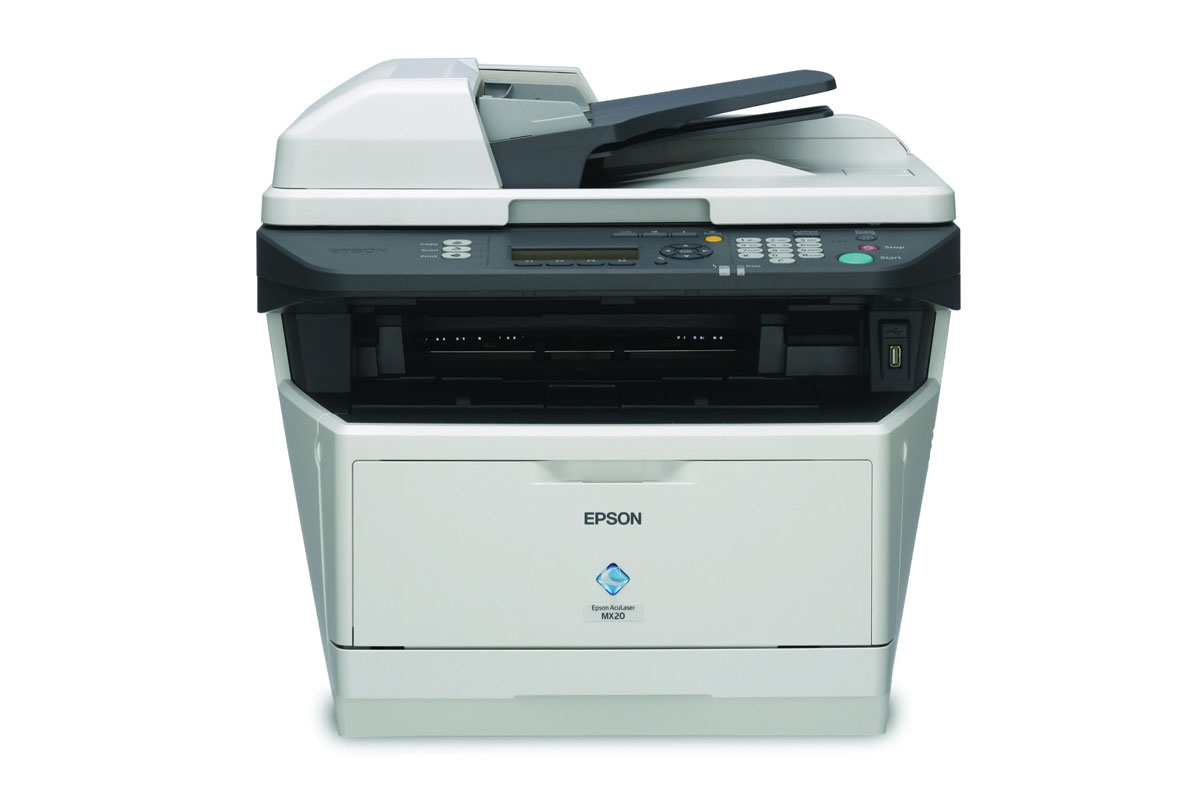Epson MX20DN review
Epson's latest mono MFP is certainly compact but is it good enough and cheap enough to earn a place in your office? Kat Orphanides finds out in our review.

If you're after a reasonably priced mono network MFP that doesn't cost too much to run, can handle a decent number of pages every month and quickly produces good quality prints, you can do much worse than the MX20DN. Its clunky physical interface and the quality of its photo mode put it out of contention for our highest rating, but it's earned a solid five stars.

The AcuLaser MX20DN is the latest addition to Epson's ever-popular range of mono laser multi function printers (MFPs) for small-to-medium sized workgroups. It has the obligatory USB and 10/100 Ethernet ports, a web interface for remote administration and the ability to scan to shared folders on network servers or a USB stick. A version with an integrated fax machine - the MX20DNF - is also available.
The MX20DN has a pretty standard set of features but a few stand out from the rest. The most notable of these is its 1,200x1,200dpi print resolution - twice that of many similarly priced MFPs, although most can manage quality that's roughly equivalent to a 1,200dpi resolution through driver-based enhancement. You can also make up to 999 copies of a page and there's both duplex printing and scanning, which makes it simple to copy double-sided documents.
If fully upgraded with two optional 250 sheet paper trays, the printer can handle a maximum of 800 pages, including the 50-page capacity of the special media tray. The latter is of more use for printing on envelopes and card stock, though, and can take a maximum paper weight of 220gsm. We were pleased to find that it printed our envelopes without creasing them or causing a paper jam.
The Automatic Document Feeder (ADF) worked a little less smoothly. It's brilliantly useful, making short work of scanning large numbers of both single- and double-sided documents. However, the MFP sometimes failed to notice that we'd inserted a page into the ADF and instead attempted to scan from the flatbed platen. It's a minor annoyance, which mostly occurred when we tried to use the ADF to scan or copy just one page.
Get the ITPro daily newsletter
Sign up today and you will receive a free copy of our Future Focus 2025 report - the leading guidance on AI, cybersecurity and other IT challenges as per 700+ senior executives
K.G. is a journalist, technical writer, developer and software preservationist. Alongside the accumulated experience of over 20 years spent working with Linux and other free/libre/open source software, their areas of special interest include IT security, anti-malware and antivirus, VPNs, identity and password management, SaaS infrastructure and its alternatives.
You can get in touch with K.G. via email at reviews@kgorphanides.com.
-
 Westcon-Comstor and Vectra AI launch brace of new channel initiatives
Westcon-Comstor and Vectra AI launch brace of new channel initiativesNews Westcon-Comstor and Vectra AI have announced the launch of two new channel growth initiatives focused on the managed security service provider (MSSP) space and AWS Marketplace.
By Daniel Todd Published
-
 Third time lucky? Microsoft finally begins roll-out of controversial Recall feature
Third time lucky? Microsoft finally begins roll-out of controversial Recall featureNews The Windows Recall feature has been plagued by setbacks and backlash from security professionals
By Emma Woollacott Published
-
 The UK government wants quantum technology out of the lab and in the hands of enterprises
The UK government wants quantum technology out of the lab and in the hands of enterprisesNews The UK government has unveiled plans to invest £121 million in quantum computing projects in an effort to drive real-world applications and adoption rates.
By Emma Woollacott Published